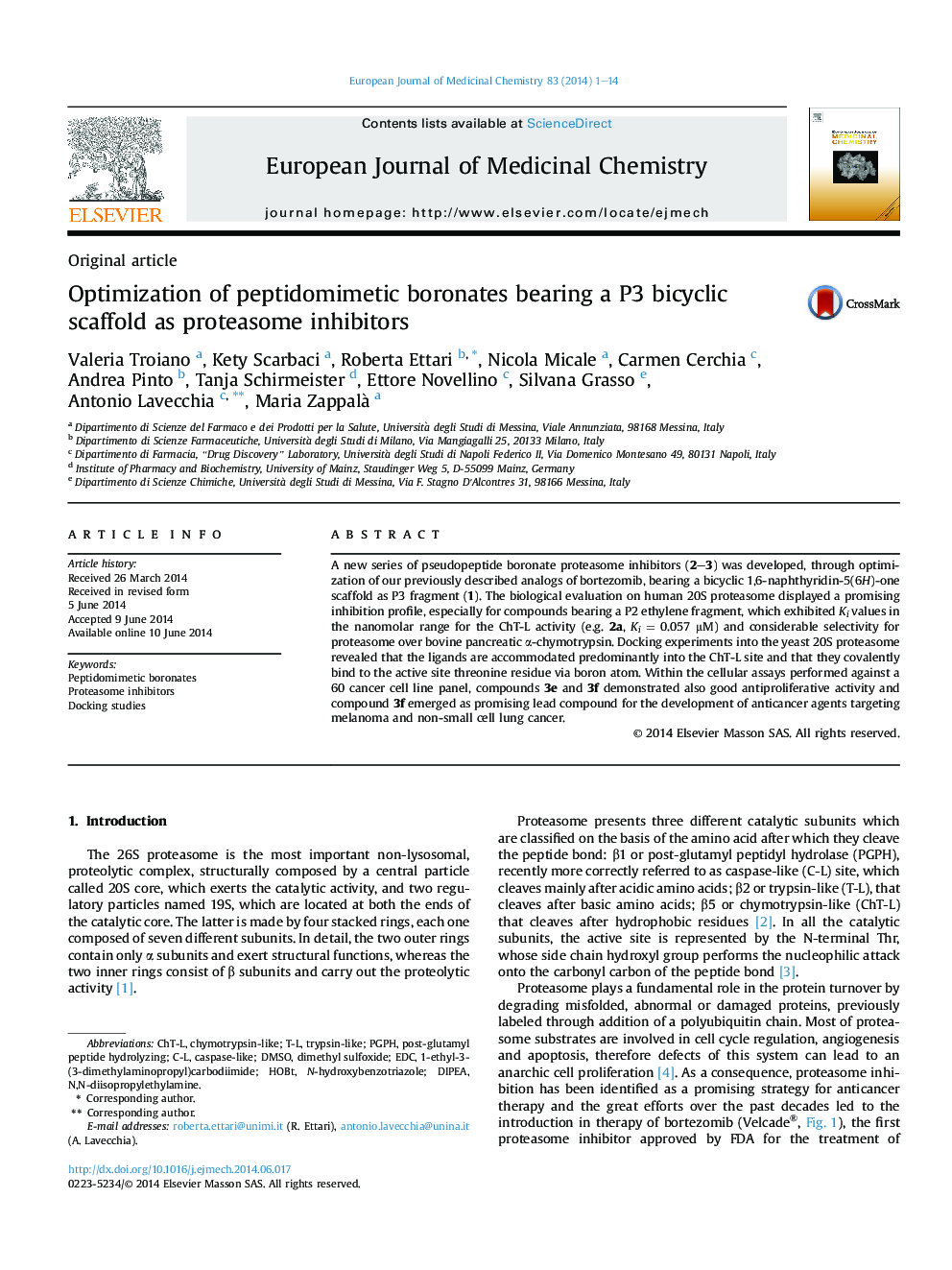| Article ID | Journal | Published Year | Pages | File Type |
|---|---|---|---|---|
| 1392409 | European Journal of Medicinal Chemistry | 2014 | 14 Pages |
•Proteasome inhibition is a promising strategy to develop antitumor agents.•Previously reported boronates were optimized by introducing a P2 ethylene fragment.•The boronates demonstrated to non-covalently inhibit the ChT-L proteasome activity.•The obtained results were rationalized by means of docking experiments.
A new series of pseudopeptide boronate proteasome inhibitors (2–3) was developed, through optimization of our previously described analogs of bortezomib, bearing a bicyclic 1,6-naphthyridin-5(6H)-one scaffold as P3 fragment (1). The biological evaluation on human 20S proteasome displayed a promising inhibition profile, especially for compounds bearing a P2 ethylene fragment, which exhibited Ki values in the nanomolar range for the ChT-L activity (e.g. 2a, Ki = 0.057 μM) and considerable selectivity for proteasome over bovine pancreatic α-chymotrypsin. Docking experiments into the yeast 20S proteasome revealed that the ligands are accommodated predominantly into the ChT-L site and that they covalently bind to the active site threonine residue via boron atom. Within the cellular assays performed against a 60 cancer cell line panel, compounds 3e and 3f demonstrated also good antiproliferative activity and compound 3f emerged as promising lead compound for the development of anticancer agents targeting melanoma and non-small cell lung cancer.
Graphical abstractFigure optionsDownload full-size imageDownload as PowerPoint slide
